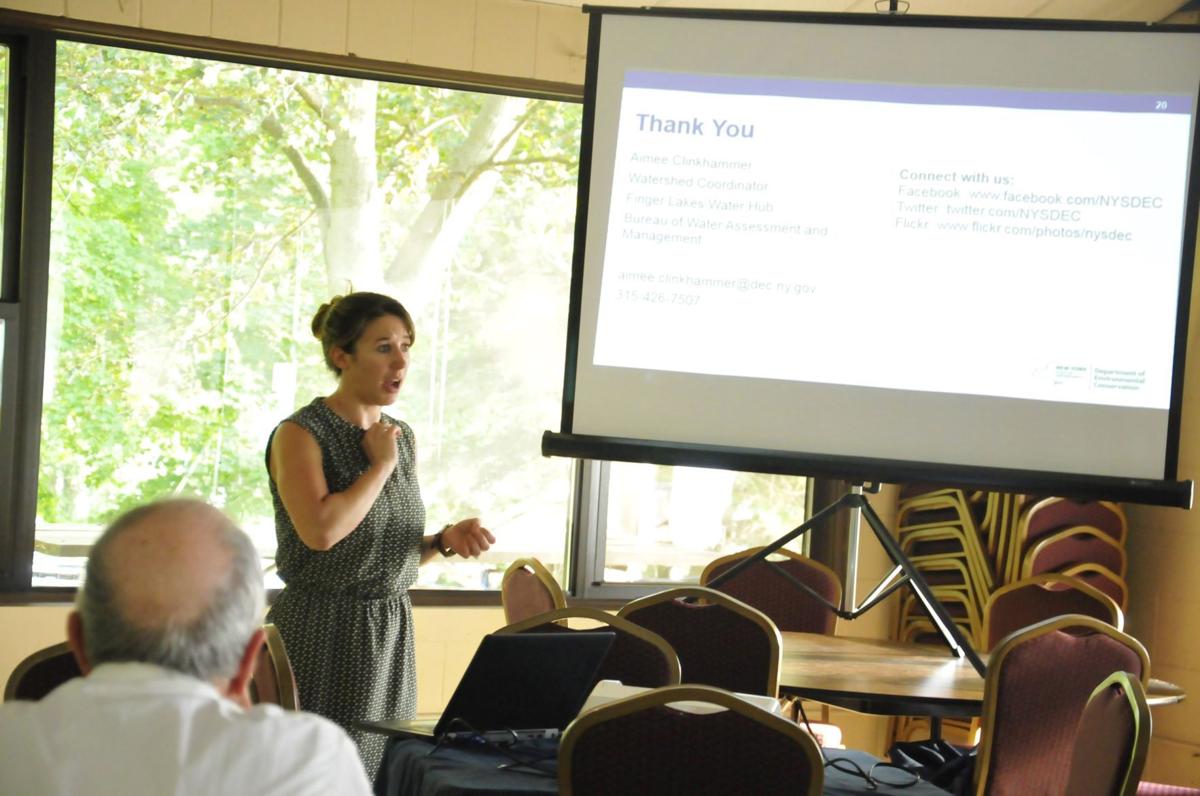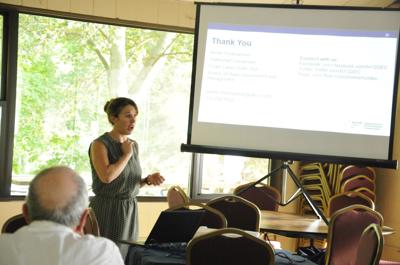OWASCO — Save Owasco Now, an has spent months calling on the state to implement pollution regulations on nutrient sources in the watershed.
Specifically, the group sent in petitions and letters calling for a Total Maximum Daily Load — or TMDL — which includes a map of all the sources of pollution in a watershed and figures out what percentage of nutrients those sources contribute. , but confusion has persisted about the similarities and differences between the two.
People are also reading…
The calls to action for both plans were spurred by Toxins from those blooms were detected in the treated drinking water of about half of Cayuga County's residents, though at low levels. The toxins also spurred the creation of the state Department of Environmental Conservation's new Finger Lakes Water Hub.
Aimee Clinkhammer, watershed coordinator for the hub, told group members Monday night that it would be unlikely for Owasco Lake to have both plans, and that she believed the Nine Elements Watershed Plan, sometimes referred to as a 9E plan, was better suited for the water body.Â
"I like the 9E because as an outreach person, it has a way better outreach plan," she said. "You're required to host public meetings. For the TMDL, it tends to be DEC doing it, kind of behind closed doors. All of a sudden we say, 'Hey, it's open for public comment for 30 days.' We're trying to do better at ."
Clinkhammer admitted the two plans are confusing, but both accomplish the same goal — reducing nutrients in a watershed. Both plans, too, make a locale more eligible for state and federal funding. Clinkhammer said that's one of the major tasks of the hub, seeking money from the federal Great Lakes restoration fund and the state.
While TMDLs can appear to have more enforcement authority, they only do when it comes to point-source pollution, she added. Point sources are very specific pollution sites, such as a wastewater treatment plant's pipe going into the lake. Owasco Lake has three point sources of pollution, and all three, Clinkhammer said, appear to have relatively low levels of nutrients. Non-point sources of pollution are things like runoff from golf courses, farms and forest erosion.Â
Terry Lattimore, a member of the group, asked Clinkhammer if the plan would be able to terminate pollution sources, or limit them.
Clinkhammer said the plan is to be able to limit incoming nutrients, but there are no enforcement capabilities. Under a TMDL for those specific point sources, a DEC permit could be modified to require the source to limit its nutrient loading. That can't be done, however, for non-point sources.
Robert Cotter, a member of the group, asked Clinkhammer if the DEC could adjust its permits around large animal farms, specifically Concentrated Animal Feeding Operations, with the findings of the county's 9E plan. Clinkhammer said those two things would not interact at all.Â
Another question brought up was how the DEC enforces its permits and pollution in the watershed. Clinkhammer said the DEC does do inspections, though on a rotating basis. With two staff members on the enforcement side covering all of Region 7 — which covers Cayuga, Tompkins, Tioga, Broome, Chenango, Cortland, Madison, Onondaga and Oswego counties — Clinkhammer said it's fortunate that residents here have the Owasco Lake Watershed Inspection Program. The DEC, she said, works closely with the inspectors on any potential issues in the watershed.
Staff writer Gwendolyn Craig can be reached at (315) 282-2237 or gwendolyn.craig@lee.net. Follow her on Twitter @gwendolynnn1.






























